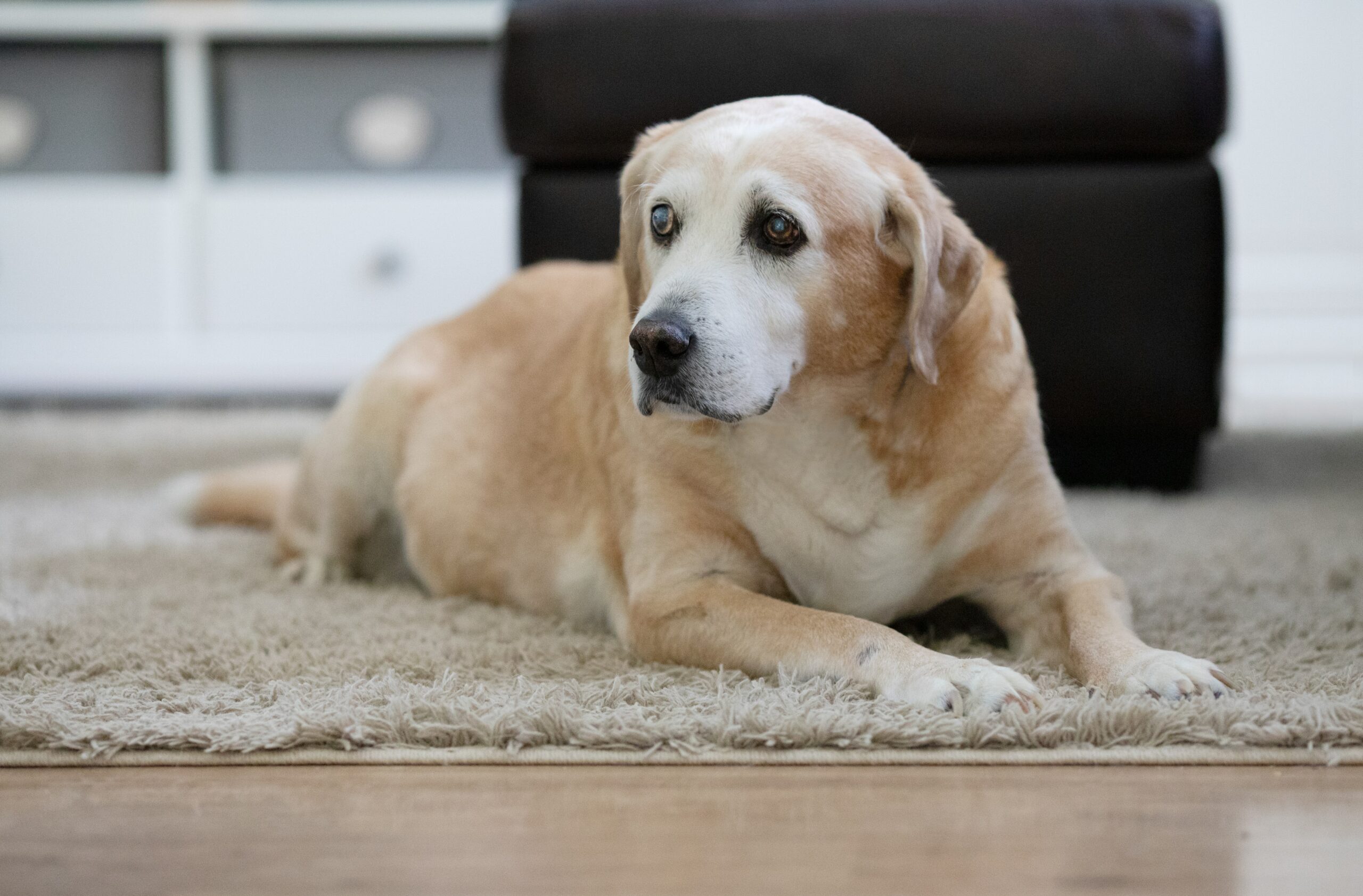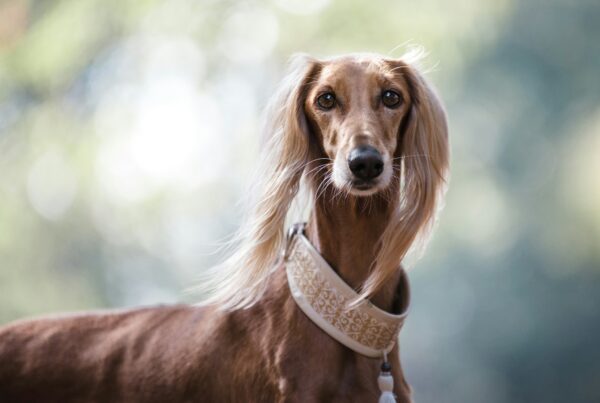Research has revealed that there are as many as 63 million households in the United States that are home to a dog. This makes dogs the most popular pets in American homes.
If you have made the loving decision of adopting a visually-impaired dog, you may need help to take care of their needs. Caring for a dog is a lifelong responsibility and you as a pet parent need to make sure that they have a safe, loving, and nurturing environment.
Losing vision is among the health-related conditions that dogs are susceptible to as they age and can be heartbreaking to you, as a pet parent. If you do have a pet in the house who does not seem as aware of its surroundings as before, chances are your dog may be steadily losing its vision.
Some of the signs to look out for include:
- Lower levels of energy
- Noticeable discomfort with the eyes
- Cloudiness in the eyes
- Difficulty locating meals, toys, or the bed
- Increased levels of clumsiness
- Exaggerated response to stimuli
A dog that is visually impaired will require a significant amount of care and love. From ensuring that they are fed and taken care of, to giving them all they need for a safe and nurturing environment, a pet parent’s responsibilities are significant.
Discover 9 helpful tips to make the process easier for your dog in this blog!
Keep Them Safe
Visually-impaired dogs are more at risk of certain dangers after losing their vision. For instance, your dog may not be able to detect any oncoming traffic or threats that they were able to perceive with 100% vision.
Dog-proof your home by getting down on all fours and looking out for hazards that your dog may run into. For instance, there may be corners that your pet may not notice and walk into that can cause serious injuries.
Put up corner protectors on all sharp furniture in your house and consider installing baby gates on the top of your stairs so your dog can maneuver them safely.
Consider getting blind dog equipment like dog halos and harnesses that can allow them to be mobile as safely as possible. This will also allow other people to recognize that your dog is visually impaired as well.
Make a Predictable Environment for your Dog
Creating a familiar environment for your pet in the house can be an excellent way to give them a safe space. For example, you should avoid making any changes to the floor plan of your house or rearranging the furniture in the room.
This allows your dog to roam the house as they like without feeling anxious about the possibility of getting injured. With trial and error, not only will your pup be able to create a mind map of the house, but they will also be able to avoid any possible hazards.
Create Textural Cues for their Feeding Area
Your visually-impaired dog needs to have regular access to their food and water bowl. You can achieve this by keeping their food and water bowl in a safe place that they have easy access to.
Use textured rugs and mats to mark the location of the food and water bowls. Your dog will be able to recognize the textures and associate the same with their feeding place.
As your dog’s vision deteriorates, they will be able to rely effectively on the textures to locate their food and water bowl. Introducing these cues early on can help them get accustomed faster.
Communicate with Verbal Cues
Communicate with your dog as often and clearly as you can. Recognizing your scent and listening to your voice can help your dog soothe themselves in stressful situations.
There are a wide number of verbal cues available to let your dog know when a person is approaching them, when they are getting close to a step or when a door is opening near them.
Introducing these cues during their training will allow your dog to get familiar well before the visual impairment settles in. You can even begin training the dog on how to navigate obstacles when taking them on walks. This would help them enjoy some regular exercise without the fear of injuries.
Let Others Know of Your Dog’s Visual Impairment
Caring for a visually-impaired dog requires effort from all those who interact with them. Creating a safe space for your pet will require that everyone in their vicinity knows of their disability.
Consider getting a vest, bandana, or shirt that reads “I’m blind” that the dog can wear while on walks. This will allow people to approach your dog slowly and carefully and allow them to sniff them first.
Additionally, you can attach a tag to your dog’s collar that lets anyone know that they are blind, in case it ever gets lost. Include your contact information so the person concerned can reach out to you in such an event.
Create a Schedule
Creating a routine for your dog can be a great way to have them accustomed to the visual impairment. From naps to feeding, walking, and relieving itself, making a routine and sticking to it will give your dog the sense of comfort they need. Maintaining your dog’s health with daily exercise can ensure they do not face any additional health complications.
You can consider making this routine keeping in mind what your personal schedule is. That way, both schedules can align as smoothly as possible, allowing your dog the time they need to be taken care of.
Keeping other members in the house informed of your dog’s routine can ensure that there are no interruptions or hindrances to their schedule. If not, unexpected disturbances can leave your pet feeling restless and anxious.
Provide Reassurance and Comfort
A visually-impaired dog may face a number of challenges in everyday life. There will be times when your dog may feel stressed, anxious, and irritable as a result of its disability.
Take some time out from your daily routine to spend 30 minutes or so with your pet. Talk to them with a soothing and calming voice and pet them while you do so. This will help them realize that they are safe with you and can depend on you to take care of them.
The comfort can also be a source of reassurance for your pet, something that they will require in the initial stages of their blindness. The care and concern you provide can help them transition easily into the loss of one of their senses. You can even consider a Pet Reiki session to help them with any anxieties and emotional distress.
Keep Children Aware and Informed
If you have children in the house, they must be taught and informed about your pet’s disability. Children may often be a source of distress to a dog that is visually impaired.
A good way to let them know how your pet may feel is by asking them to crawl around the house with their eyes closed (under supervision). This may give them an additional perspective that they need to keep in mind when interacting with the dog.
Be Patient
Having a pet with a disability can be difficult, both for the parent as well as the pup. Being as patient as possible during these difficult times is crucial, as a pet parent.
Your pet will require all of your time and patience to adjust to its deteriorating eyesight. It may be frustrating seeing your beloved dog struggling to go about its tasks, but remember that they will adjust with patience, love, and care over time.
Additionally, schedule regular veterinary appointments so that the condition can be monitored and the right steps can be taken.
Incorporating all of the above 9 steps into your everyday routine can create a seamless structure that will give your pet all they need to feel safe and loved. Take your time, be patient, and know that all of your efforts will pay off with your dog feeling secure and safe.
photo credit: https://unsplash.com/photos/FnMh0z-IeBY
Love our content? Share it with a friend or link it to social media. Like short clips of cute household pets? Training tips? Follow us on instagram @nydognanny or on YouTube at nydognanny. Have some news you needs to get to dog and cat parents stat? Email info@newyorkdognanny.com with your article pitch.




